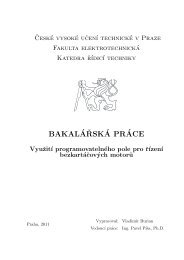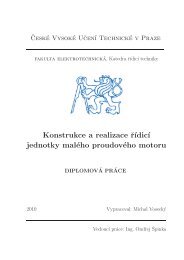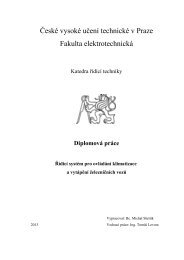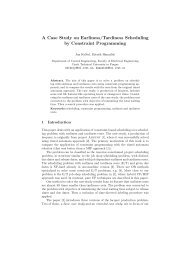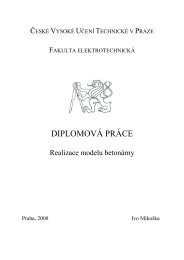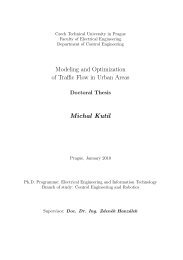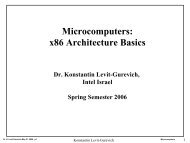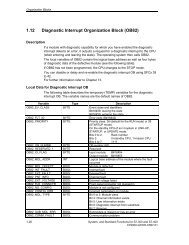Bachelor Thesis - Czech Technical University in Prague
Bachelor Thesis - Czech Technical University in Prague
Bachelor Thesis - Czech Technical University in Prague
Create successful ePaper yourself
Turn your PDF publications into a flip-book with our unique Google optimized e-Paper software.
electrodes. The boundaries cut the electrodes <strong>in</strong> half, we can use the Dirichletboundary condition for the boundary above the electrodes whose elecricpotential is 0, because they are located midway between two electrodeswith equal electric potential of opposite signs. Boundary go<strong>in</strong>g through theelectrodes with non-zero electric potential should be assigned the Neumanncondition as it is the symmetry axis between two 0 electric potentials.Numerical simulations theory is taken from [2]3.3 HybridHybrid simulation uses the power of numerical simulation for preprocess<strong>in</strong>gdata for different array configurations and then us<strong>in</strong>g the preprocessed datato quickly f<strong>in</strong>d the force when it’s required. In this work we will use theapproach from [4].This approach uses bidimensional electrode mesh<strong>in</strong>g pr<strong>in</strong>ciple for preprocess<strong>in</strong>g.The electrodes are all meshed along directions x and y. Figure 3.2shows an example of mesh for a 4 electrode parallel array. A voltage is appliedto one electrode while the rest are kept at zero. The surface charge onthe electrodes is then calculated and <strong>in</strong>tegrated on each mesh piece. Eachmesh piece is then represented by an elementary charge located at its center.The process is done for n electrodes for an (n+1)-electrode matrix. Oneelectrode is always kept at zero and is used as the reference one. The electricfield is the sum of contributions of elementary charges Q r,s at po<strong>in</strong>t P (r, s).The electric field is then:E(x, y, z) =12πɛ 0 ɛ m∑e x e∑ yr=1 s=1Q r,s ·−−−−−−−−−−−→P (r, s)M(x, y, z)|| −−−−−−−−−−−→P (r, s)M(x, y, z)|| 3 ds (3.3)Q r,s can be calculated us<strong>in</strong>g the superposition pr<strong>in</strong>ciple:Q r,s =n∑C r,s,m · U m (3.4)m=110



